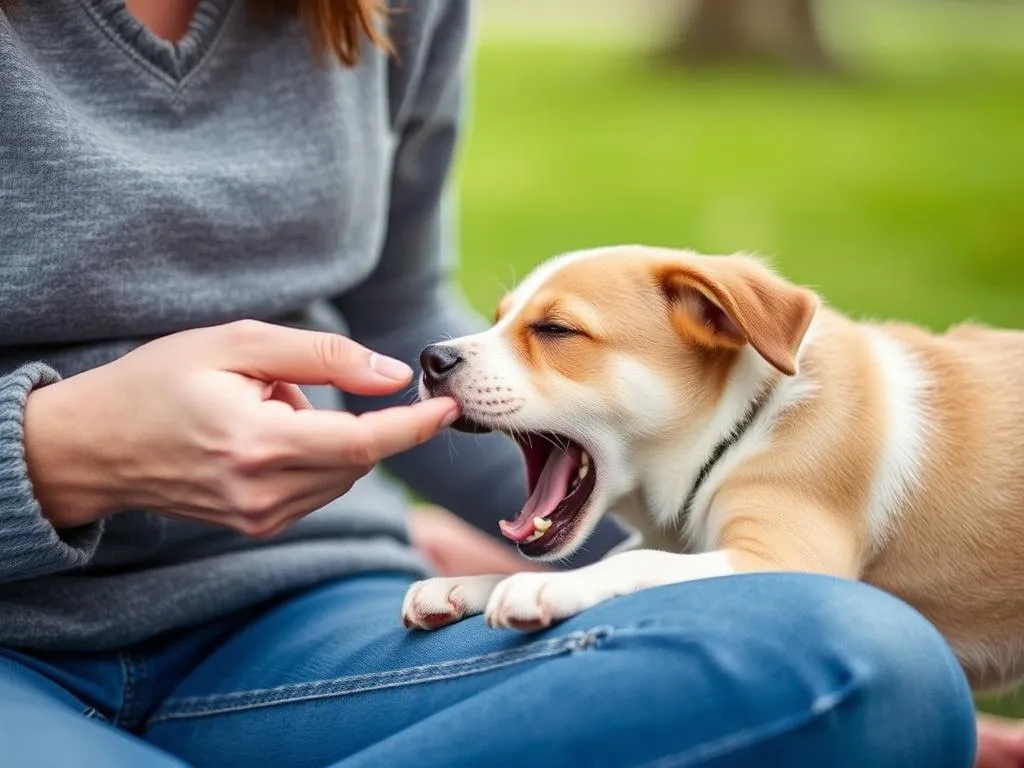
Introduction
Puppy biting is a common issue faced by many new dog owners. While it may seem harmless, allowing this behavior to continue can lead to more serious problems as your puppy grows. Addressing biting behavior early is crucial to ensuring a well-behaved adult dog. This guide will delve into understanding why puppies bite, effective strategies to curb this behavior, and tips for successful training.
Understanding Puppy Biting
Why Do Puppies Bite?
Puppies bite for several reasons, and understanding these motivations can help you address the behavior effectively.
- Natural Instincts: Puppies are naturally inclined to chew and bite as they explore their environment. Teething can be uncomfortable, and chewing helps alleviate some of that discomfort.
- Play Behavior: Biting is often part of play among puppies. They use their mouths to interact with their littermates and learn important social skills.
- Socialization: Puppies learn boundaries and bite inhibition through play, but they need guidance from their owners to understand what is acceptable.
The Different Types of Biting
Recognizing the type of biting behavior your puppy exhibits is essential for addressing it correctly.
- Play Biting: This type of biting is usually gentle and occurs during playtime. Puppies often nip at hands, shoes, or other objects.
- Aggressive Biting: This behavior can stem from fear, pain, or a desire to assert dominance. It is crucial to differentiate between playful and aggressive bites to respond appropriately.
Assessing the Situation
Identifying Triggers
Understanding what prompts your puppy to bite can provide valuable insights into how to stop it. Pay attention to situations that lead to biting, such as:
- Overstimulation during play
- Sudden movements or loud noises
- Frustration when trying to get attention
Additionally, observing your puppy’s body language can help you identify when they are becoming agitated or excited, providing opportunities to redirect their focus before biting occurs.
Knowing Your Puppy’s Breed
Different breeds have varying characteristics that can influence biting behavior. For example:
- Terriers: These breeds may have a higher prey drive, leading to more vigorous play biting.
- Herding Dogs: Breeds like Border Collies might nip as part of their herding instincts.
Understanding your puppy’s breed traits can help tailor your training approach accordingly.
Strategies to Stop Biting
Redirecting Biting Behavior
One effective method to curb biting is to redirect your puppy’s attention to appropriate items.
- Provide Chew Toys: Invest in a variety of chew toys that are safe and durable. When your puppy starts to bite, offer them a toy instead.
- Distraction Techniques: Use engaging toys or games to divert your puppy’s focus. A game of fetch or tug can shift their energy away from biting.
Teaching Bite Inhibition
Teaching your puppy bite inhibition is vital for helping them understand their limits.
- Expressing Discomfort: When your puppy bites too hard, let out a yelp or say “ouch!” This mimics the reaction of their littermates and signals that they are being too rough.
- Reinforcing Soft Bites: Reward your puppy when they play gently with treats or praise. This positive reinforcement encourages them to modify their behavior.
Positive Reinforcement Techniques
Using positive reinforcement is one of the most effective ways to train your puppy.
- Reward Good Behavior: Whenever your puppy plays without biting, immediately reward them with treats or affection. This reinforces the behavior you want to see.
- Consistency is Key: Ensure that everyone in your household follows the same training techniques. Consistency will help your puppy learn faster.
Time-Out Method
Implementing time-outs can be an effective way to manage biting behavior.
- When to Use Time-Outs: If your puppy continues to bite after being redirected or if they show signs of aggression, calmly remove them from the situation.
- Importance of Consistency: Make sure to use the time-out method consistently. This helps your puppy understand that biting leads to loss of playtime or attention.
Training Tips and Techniques
Socialization with Other Dogs
Socialization is critical to helping your puppy learn proper behavior.
- Benefits of Early Socialization: Exposing your puppy to various environments, people, and other dogs can help them learn bite inhibition naturally.
- Safe Environments: Look for puppy classes or playgroups where your puppy can interact safely with other dogs under supervision.
Obedience Training Basics
Incorporating obedience training into your puppy’s routine can significantly reduce biting.
- Basic Commands: Teaching your puppy commands like “sit,” “stay,” and “leave it” can help you manage their behavior effectively.
- Bite Training Sessions: Use obedience training as an opportunity to reinforce biting limits. For example, practice commands during playtime to maintain control.
Professional Training Options
If you’re struggling to manage your puppy’s biting behavior, it may be time to seek professional help.
- When to Seek Help: If your puppy’s biting escalates or if you’re unsure how to proceed, a professional trainer can provide guidance tailored to your situation.
- Types of Training Programs: Look for classes that focus on positive reinforcement and socialization, which can be especially beneficial for addressing biting behavior.
Common Mistakes to Avoid
Punishment-Based Techniques
Using punishment to correct biting behavior can be counterproductive.
- Why Punishment Can Exacerbate Biting: Punishing your puppy can lead to fear or anxiety, which may result in more biting or aggressive behavior. Focus on positive reinforcement instead.
Inconsistency in Training
Being inconsistent with training can confuse your puppy.
- The Importance of a Consistent Approach: Ensure that everyone in your home is on the same page regarding training methods. Consistency helps your puppy learn what is expected.
Ignoring Warning Signs
It’s essential to recognize and respond to your puppy’s stress signals.
- Recognizing Stress Signals: Signs like excessive barking, growling, or cowering can indicate discomfort. Addressing these signals promptly can prevent biting incidents.
Conclusion
In summary, managing your puppy’s biting behavior requires understanding their motivations, implementing effective strategies, and maintaining consistency in training. Remember to be patient; learning takes time for both you and your puppy. Engaging with training communities can also provide ongoing support as you navigate this journey together.









